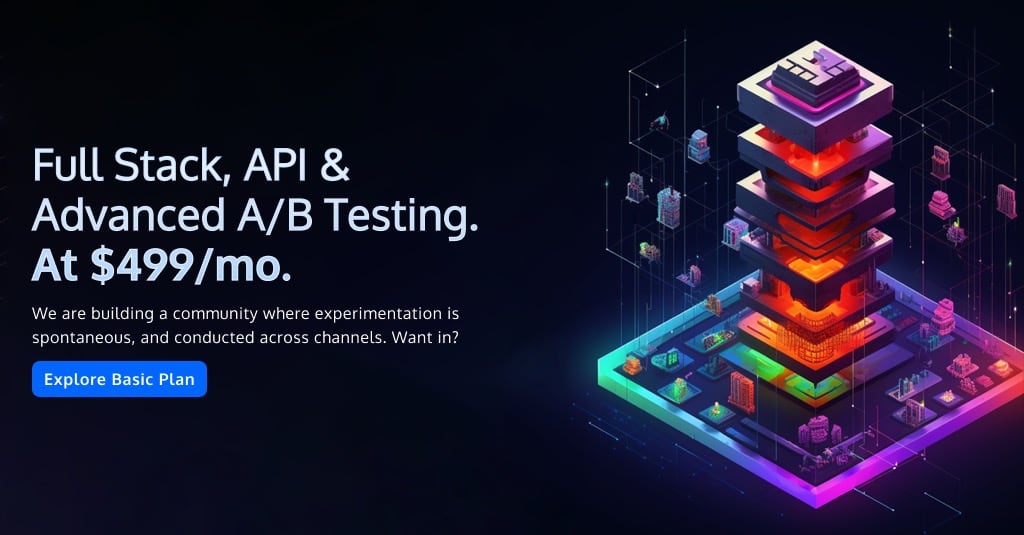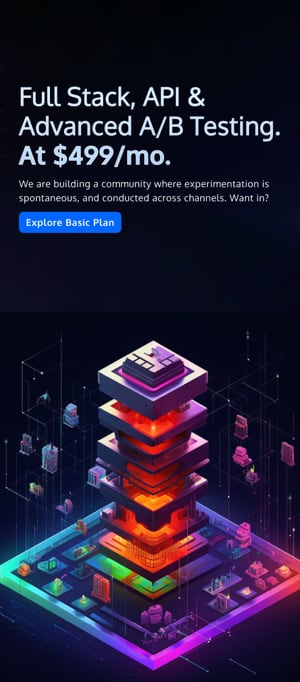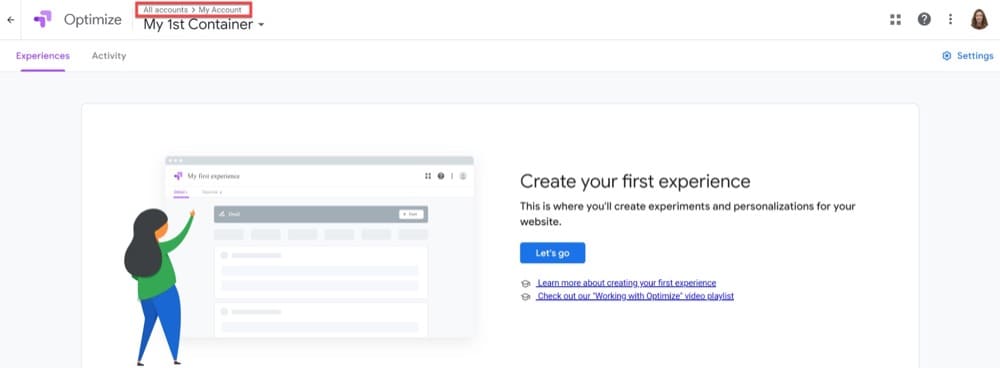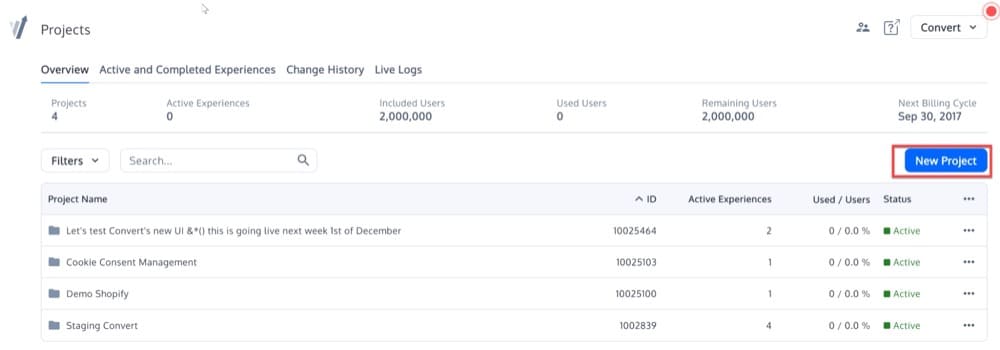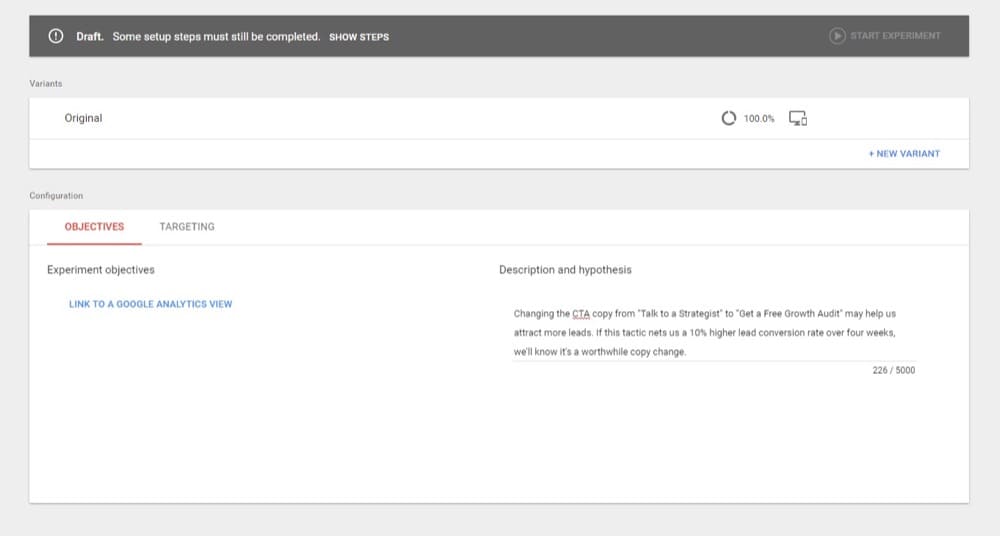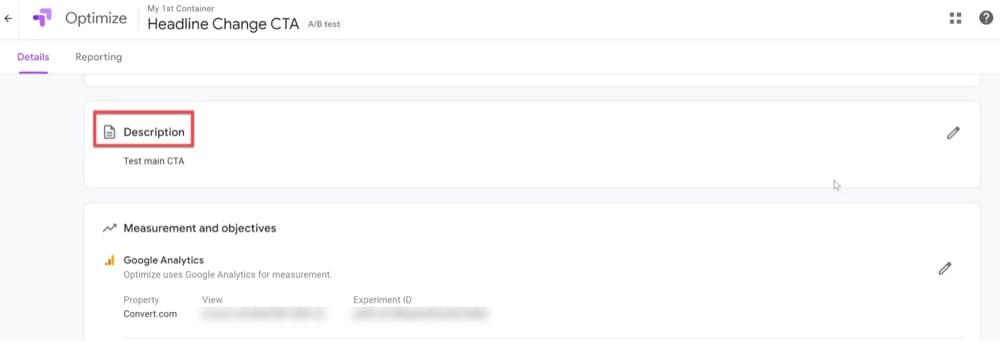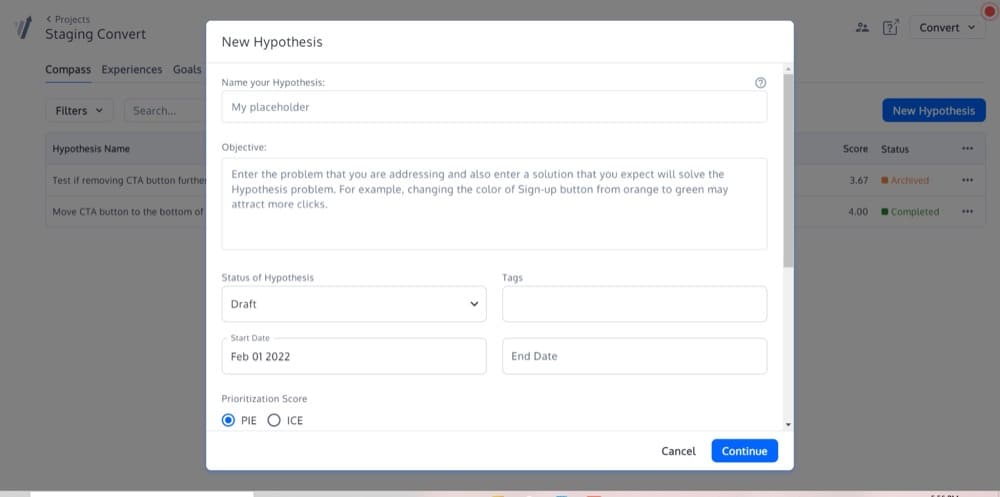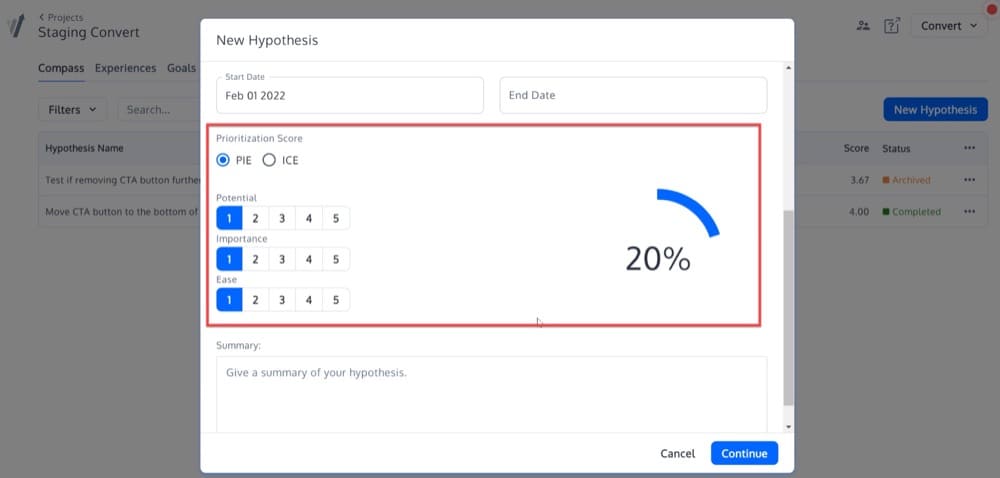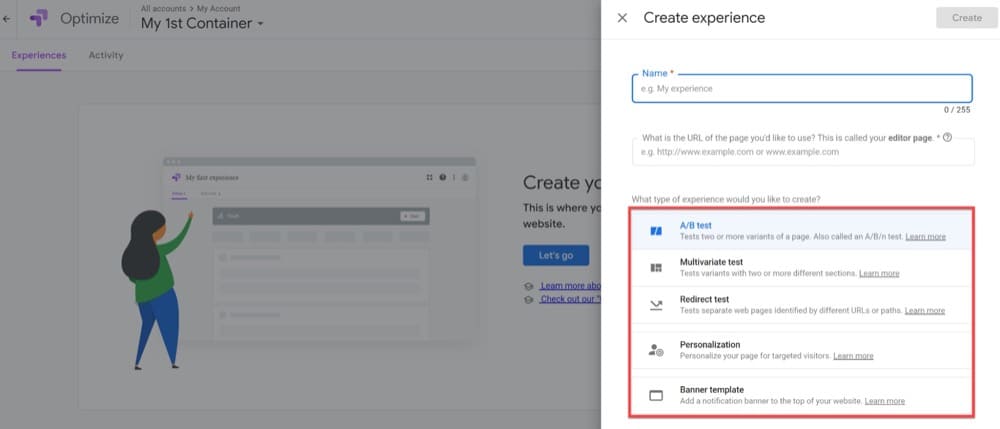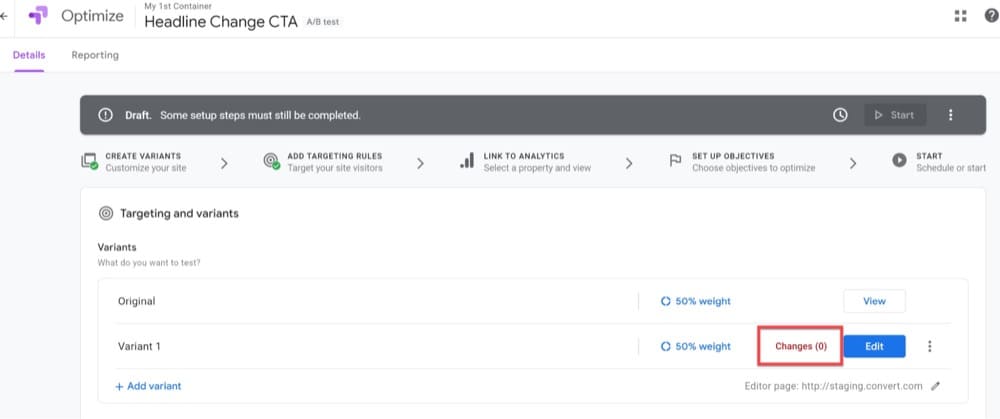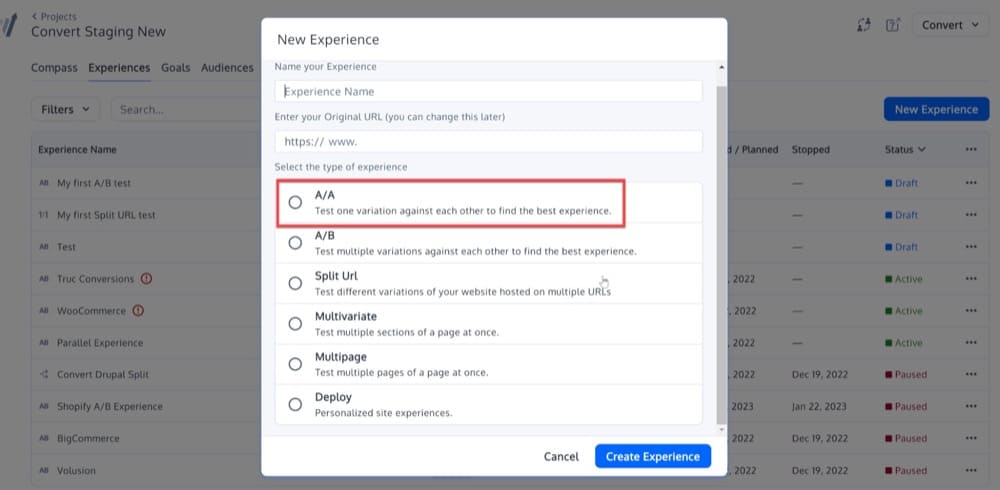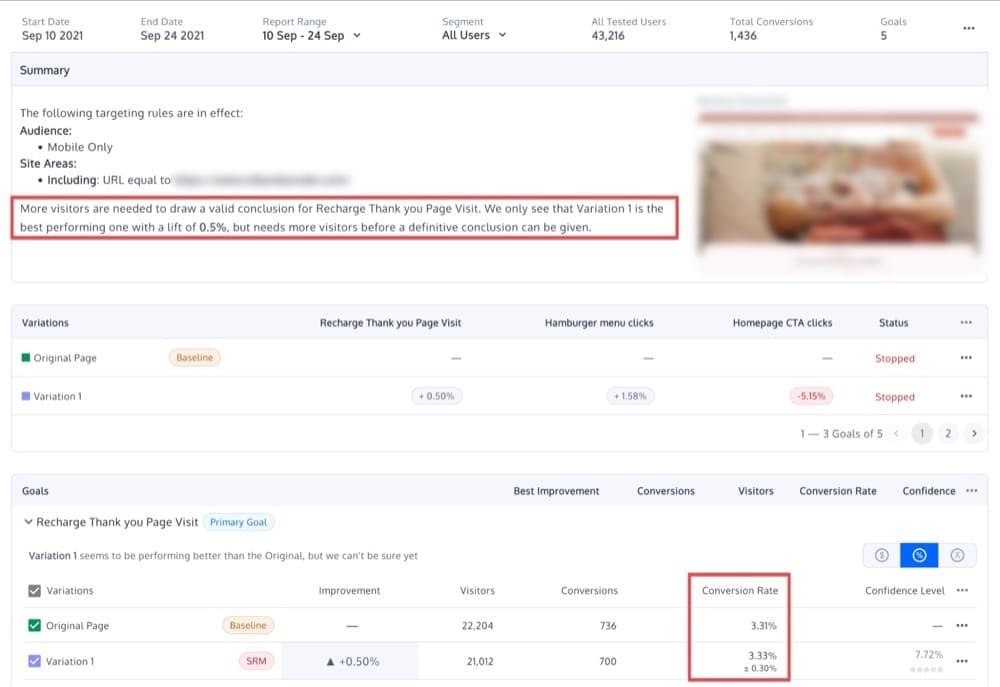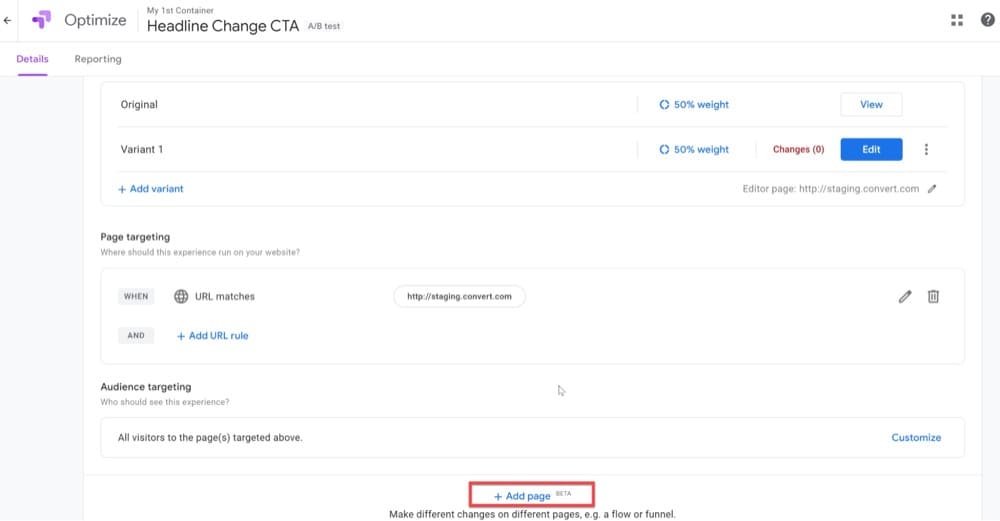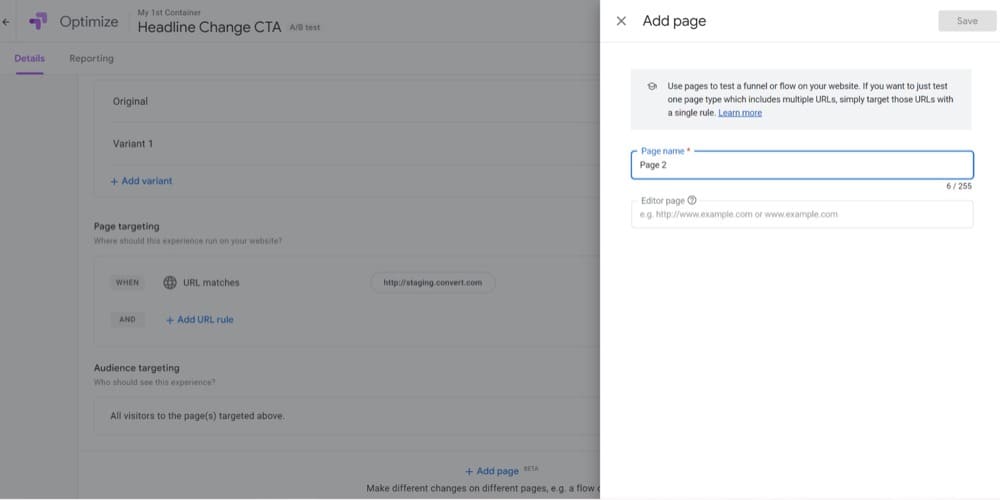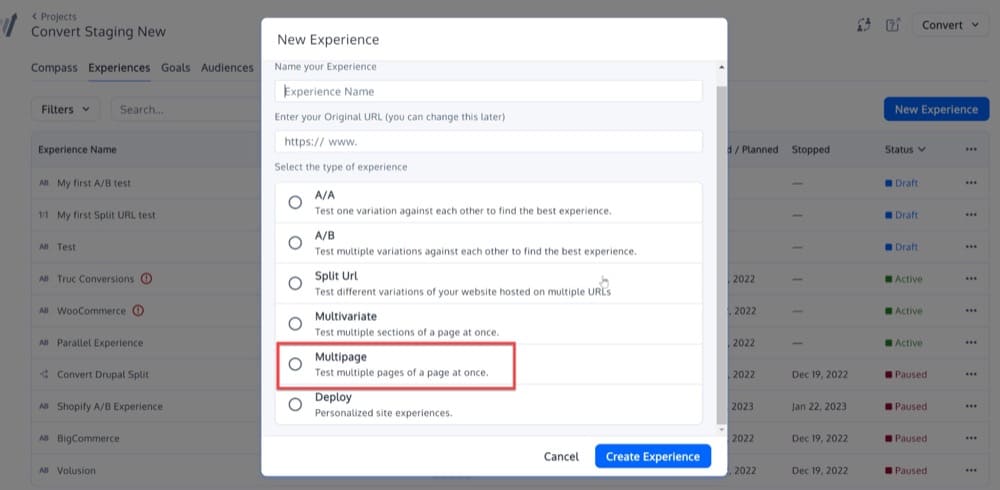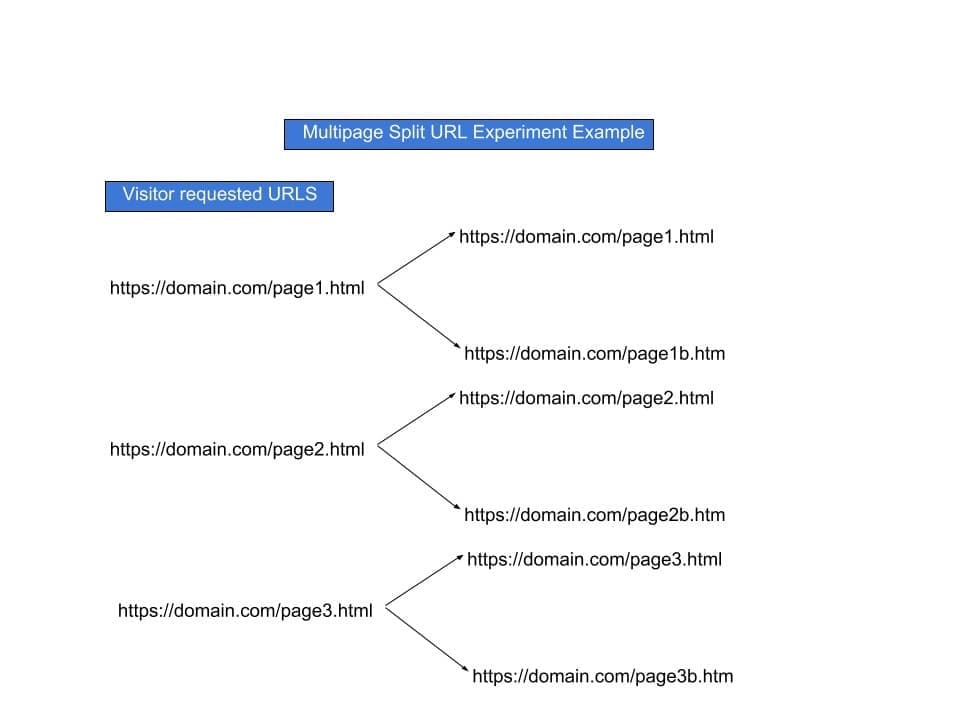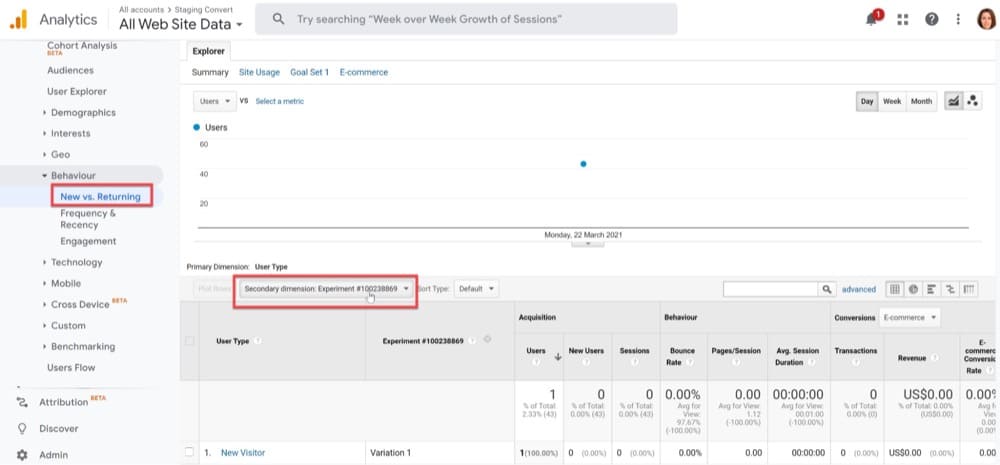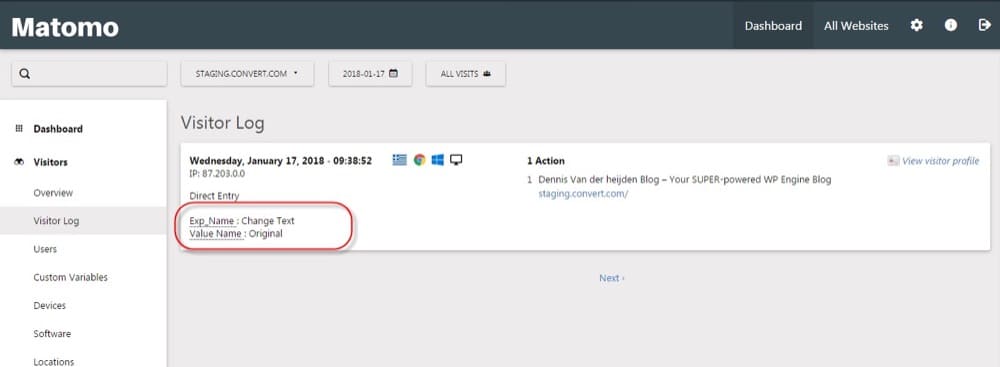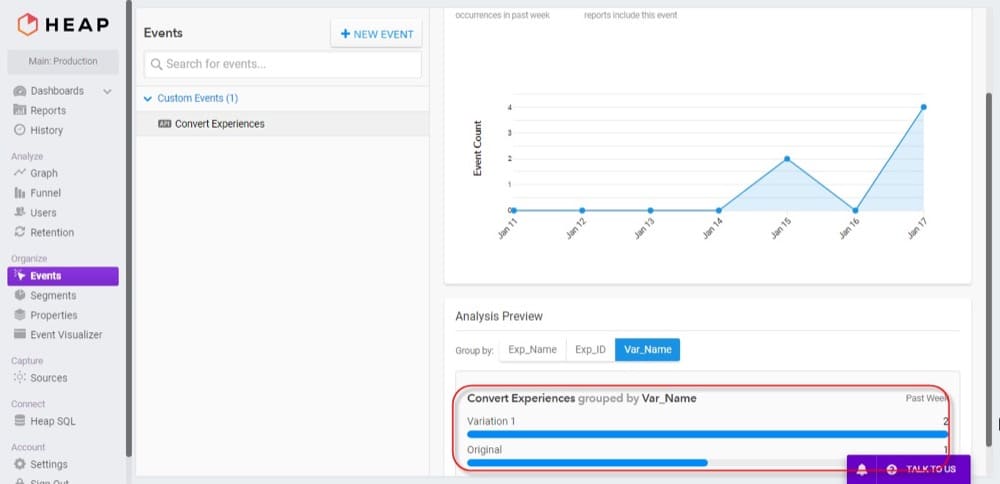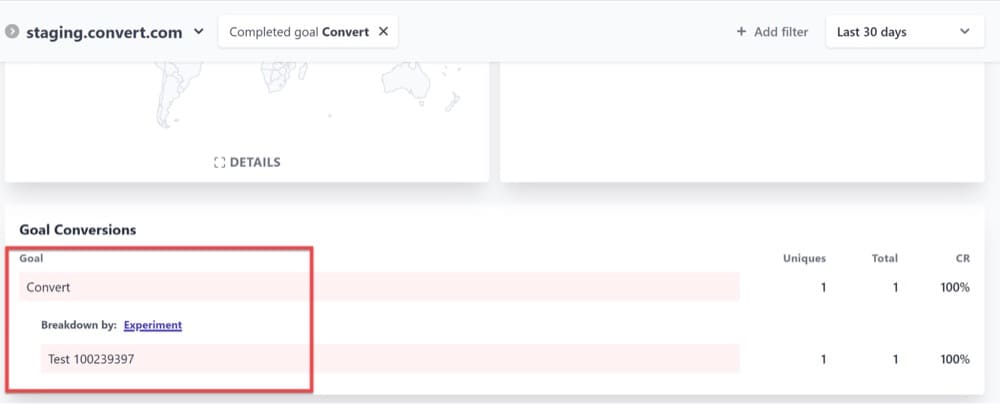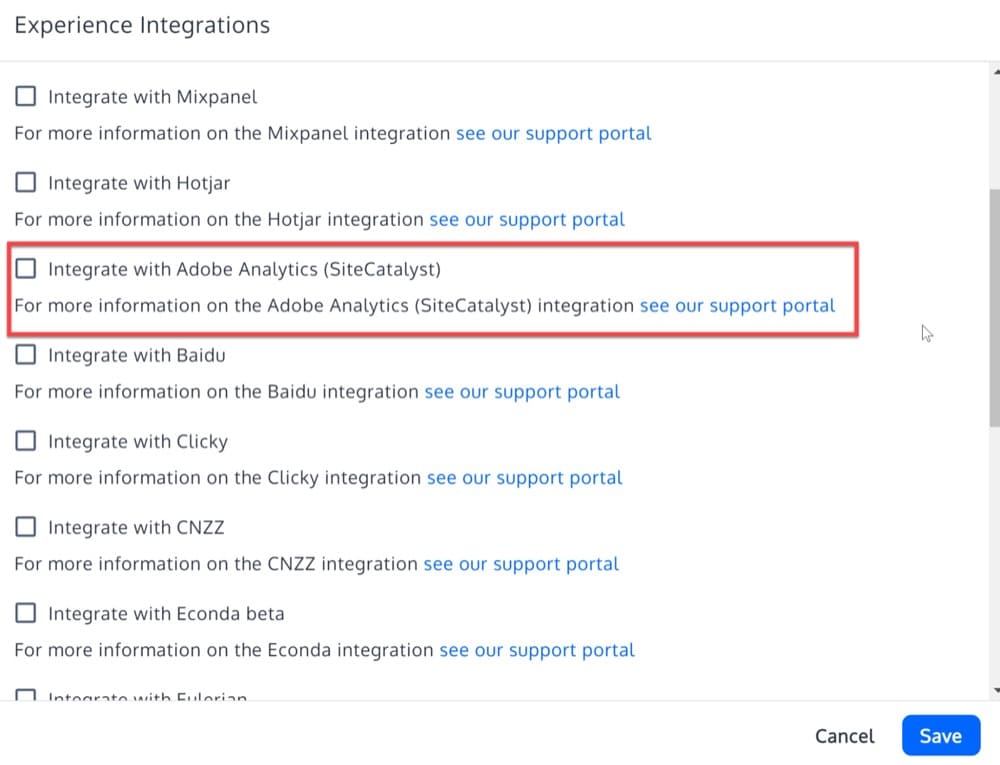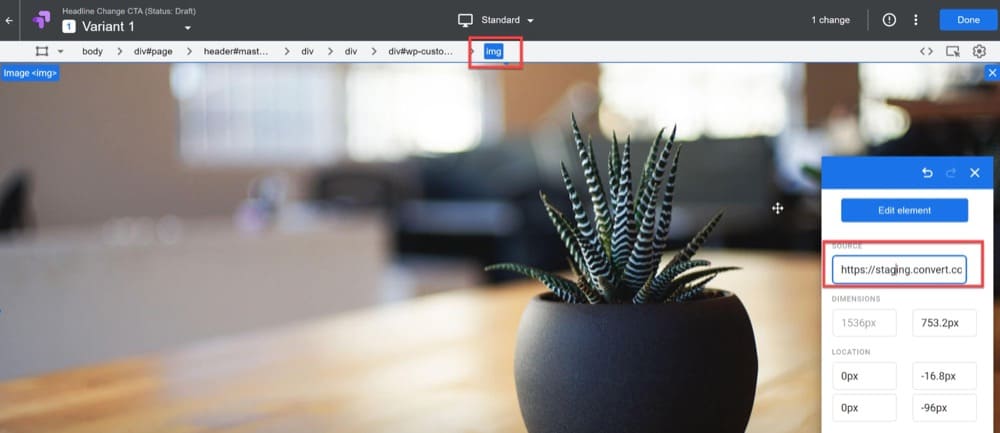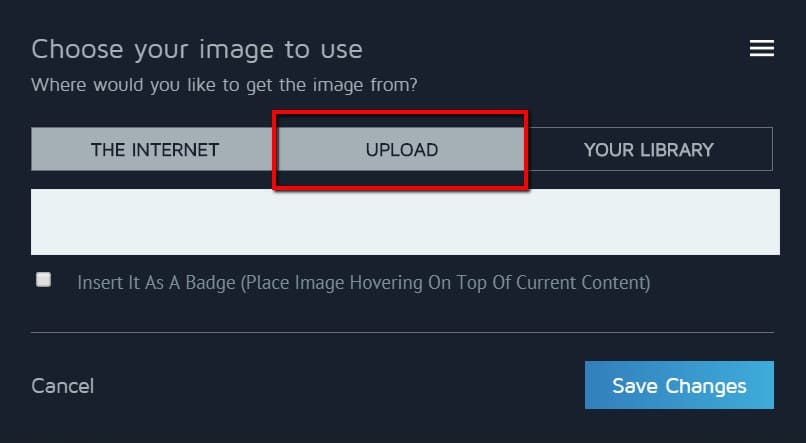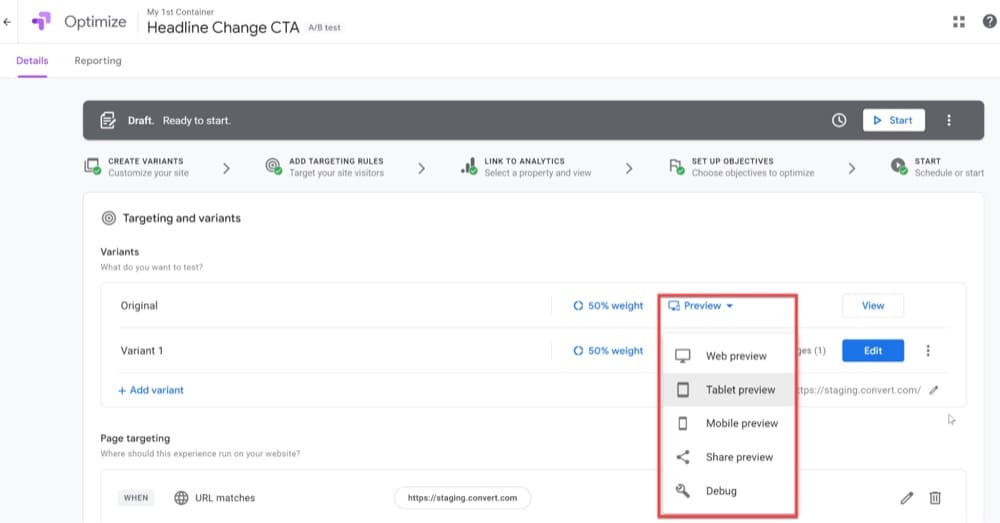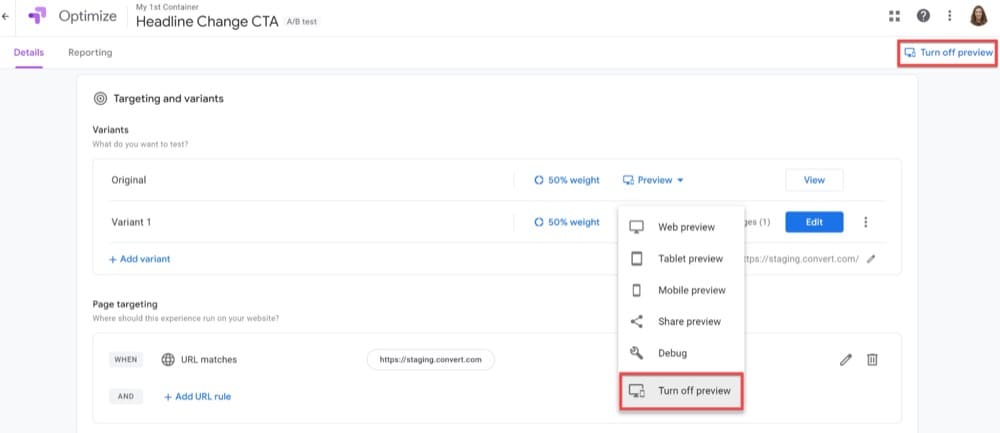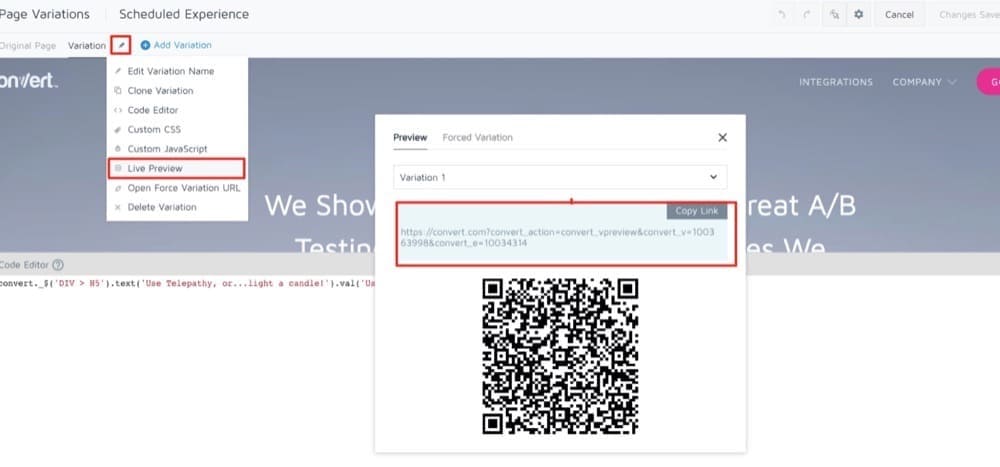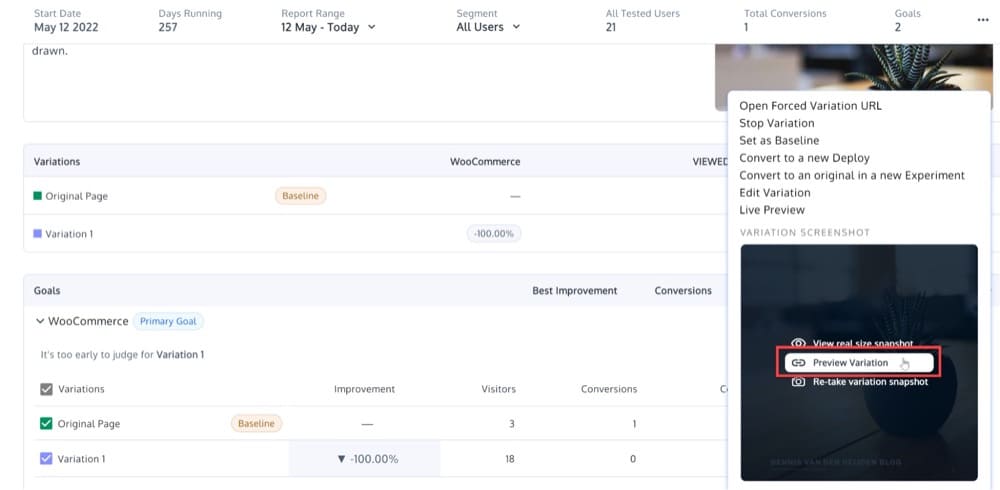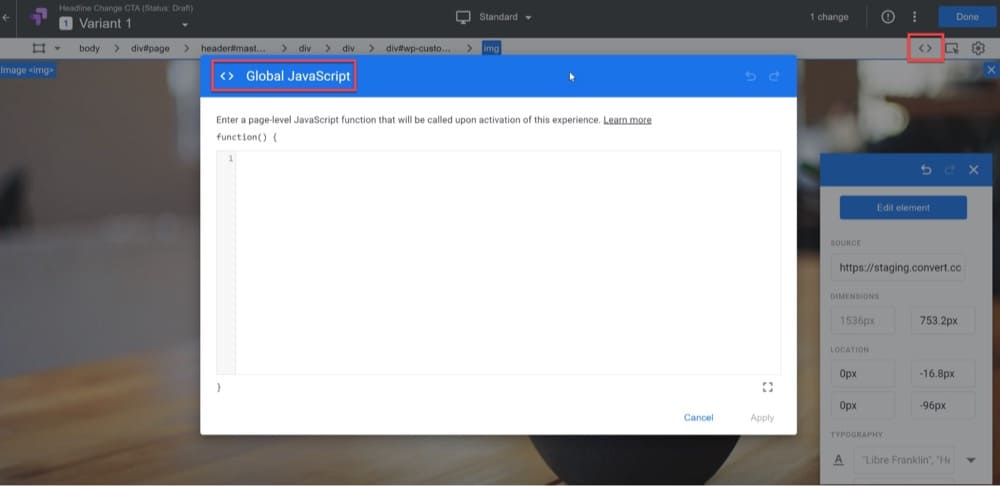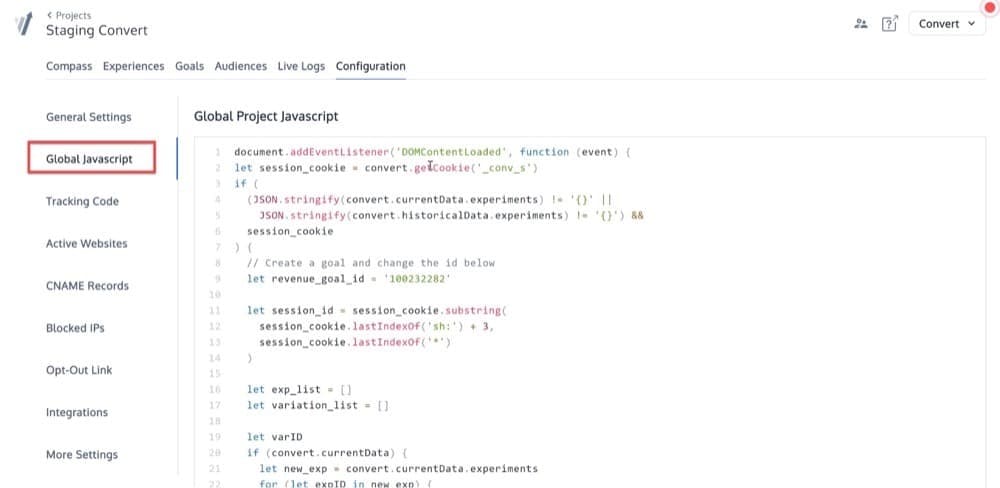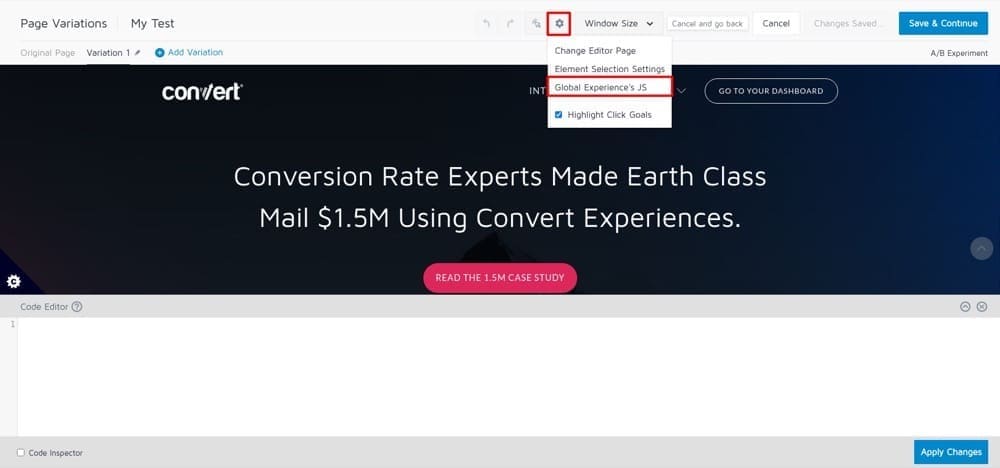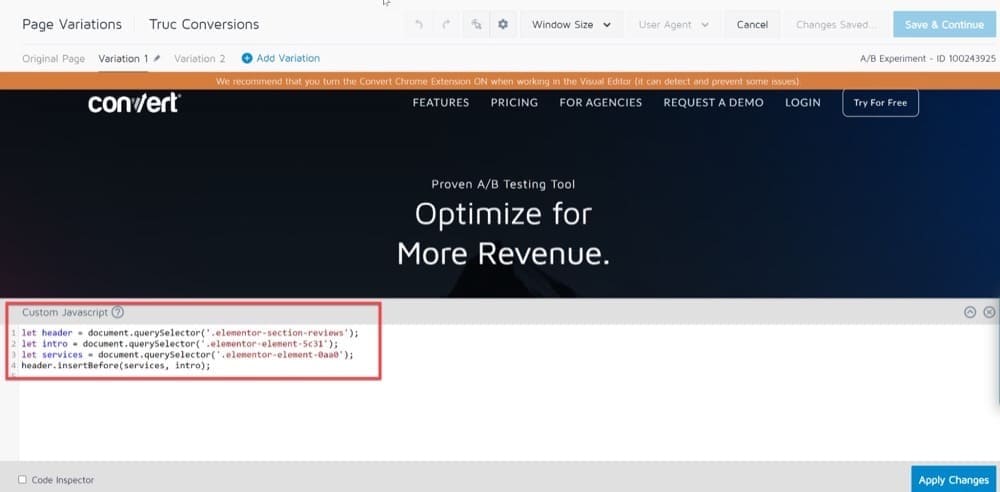Break Free From These 9 Google Optimize Limitations With Convert Experiences

We get that you’re here after the Google Optimize sunset announcement.
We’re sorry to say that if you cherished a deep (and secret) hope of seeing Optimize in a GA4 avatar … Google has updated its original sunset announcement to shatter that dream.
Google will invest in ensuring that those who wish to use GA4 to analyze experimentation data can do so with a slew of deep vendor integrations. This list of vendors is rapidly expanding, and will continue to grow as we get ever so close to 30th September 2023.
But to all intents and purposes — it is good-bye Google Optimize….
You must seek out viable Google Optimize alternatives. And yes, you need to start right now!
One way to go about evaluating your options is to ensure your new experimentation tool doesn’t suffer the same limitations GO (free) did. It sounds like a no-brainer, but most in-house testing teams do not have this critical information in a handy list.
That changes with this blog.
Convert has proudly occupied this space for a decade. And we’ve brought two community plans that are created keeping in mind Google Optimize switchers. Please review them here and ask questions! Use the site chat and give us your feedback!
- Limitation 1: Limited Container Capacity
- Limitation 2: No Hypotheses Field
- Limitation 3: Missing Native A/A Experiences
- Limitation 4: Missing Native Multi-page Experiences
- Limitation 5: Only Works Well with Google Analytics
- Limitation 6: Unable to Host Uploaded Images
- Limitation 7: Preview Mode Only Compatible with Chrome
- Limitation 8: Missing Flexible CSS/JS Editors
- Limitation 9: Poor User Experience Due to Page Flickering
- Time to Choose an Alternative
Limitation 1: Limited Container Capacity
First, it’s important to understand the difference between an account and a container in order to browse and use the Google Optimize platform effectively.
Briefly, here’s what you need to know:
Account = Google Optimize’s top-level component
The “All Accounts” option in the upper left corner of Google Optimize will display your accounts as follows:
There could be one or more containers inside of an account.
Container = The place where you keep all your website domains and experiments. Each container has a distinct Container ID with an alphanumeric string for identification.
By using a container, you can arrange everything neatly and keep it in one place.
Each Google Optimize container has a certain amount of capacity to run experiences. This capacity only includes experiences that are active. At certain thresholds, a banner might appear at the top of your container page displaying capacity information, like so
- 50% of capacity
- 70% of capacity
- 90% of capacity
Once the 400K capacity limit is reached, you won’t be able to make any additional changes to your experiences meaning you will not be able to run more active experiments. You will inevitably reach that limit soon if each experiment contains a lot of HTML and JavaScript coding or if you run a lot of parallel experiments.
Like Google Optimize’s accounts and containers, Convert has accounts and projects.
Convert’s project tracking script does not have the above limitation. You can run as many experiences as you want simultaneously.
Convert’s project tracking script is a line of code that you implement on your site to run Convert Experiences. It contains information about your experiments and various account settings.
The snippet contains the Convert JavaScript file, downloaded by your visitors’ browsers at the beginning of the page loading process. It is static and will be cached in your visitors’ browsers after the first request. It’s also hosted on Akamai CDN servers. As a result, the snippet is served very quickly.
If this script becomes large, we provide a series of recommendations to avoid any impact on the site speed, but Convert NEVER limits the number of active experiences that can run in parallel.
Limitation 2: No Hypotheses Field
A hypothesis is a statement that if your website were changed in a particular way, visitors would take the action you desire. Typically, hypotheses are derived from research, and they must be saved so that future A/B tests can be devised based on them.
Google Optimize once had a hypothesis field inside the Configuration > Objectives section:
But that is not the case with the latest version, which lacks a dedicated hypothesis section:
With Convert, you can define your hypotheses, prioritize them and turn them into active experiences.
Limitation 3: Missing Native A/A Experiences
Google Optimize offers several types of experiences that you can run but A/A tests are missing from the list.
Yes, you can use the A/B test within Optimize and serve it as an A/A test by not changing the B version. But does it work the same way as an A/A test?
Instead of Frequentist, Google Optimize uses Bayesian inference. That means the model makes assumptions about new data based on data that’s already captured. When new data is received (not from GA but from previous experiments), Google fine-tunes its “model” to obtain more precise results. The more data collected, the more accurate the results will be.
Depending on how long an experiment runs, the Bayesian prior probability distribution however might lead to inaccurate results.
Now, let’s go back to the A/A dilemma. In A/A testing, the same page is compared to itself.
Because Google Optimize cannot distinguish between these pages using the Bayesian model, it will be looking at something else in that experiment. It doesn’t matter how small the difference is, Google says. The tool examines many models in order to provide the most accurate findings.
Essentially, if Google Optimize detects such a tiny difference between the two variants, e.g. average session duration on site, it will declare one of them as the winner, which is completely inconsistent with A/A testing.
Convert uses a frequentist statistical model, which means you can run A/A tests to
- identify potential technical problems with your A/B testing tool,
- evaluate the accuracy of your A/B testing platform,
- ascertain whether your A/B testing platform is fully integrated with your internal analytics,
- provide a baseline conversion rate for a page or funnel,
- choose the right sample size to use for your A/B testing,
- and benchmark the performance of your pages and funnels.
Correctly set up A/A tests will never produce false winners:
Limitation 4: Missing Native Multi-page Experiences
Google Optimize introduced multipage experiences in 2019. The feature is still considered a beta in 2023 and is not native to the platform.
A single-page A/B experiment is the first step and you can add additional pages by clicking the “+ Add page” button at the bottom of the screen. The audience targeting guidelines and variation names are the same for the entire experiment.
Convert not only offers multi-page A/B experiences but also multi-page Split URL tests and multi-page deployments:
Limitation 5: Only Works Well with Google Analytics
Although Google Optimize seamlessly integrates with Google Analytics, it does not have official integrations with Heap Analytics, Plausible, Matomo, Adobe Analytics, etc.
This can be a huge limitation, especially for European users, after a number of DPA complaints assert that the use of GA violates the GDPR (in Austria, France, Sweden, Italy, Belgium, Denmark, Norway, and the Netherlands).
In contrast, Convert has built several integrations with various analytics tools.
Limitation 6: Unable to Host Uploaded Images
With Google Optimize you cannot upload new images for A/B testing because Google Optimize is a free service and doesn’t keep a lot of data.
Unless you use a third-party application or your own server, you cannot upload photos to Google Optimize. The easiest way to overcome this Google Optimize drawback is to upload a picture directly into the website’s CMS and link to that internal file in your A/B tests.
With Convert Visual Editor, you can change, insert, or edit images on a webpage without touching a single line of code.
Note: The maximum file size you can upload to your library is 2MB per image file.
Limitation 7: Preview Mode Only Compatible with Chrome
Google Optimize preview mode has some restrictions too.
Preview mode is only compatible with Chrome:
“We recommend using preview mode on Chrome. Safari users must go to Preferences > Privacy and then clear Prevent cross-site tracking to use preview mode. Firefox users must disable Enhanced Tracking Protection using the shield icon available on the browser bar.”
For the preview mode to work, you must be logged into your Google Optimize container. Even then, it might not function; you might be prompted to disable or enable cookies or even restart the browser. Similarly, shareable preview links won’t work if third-party cookies are disabled in your browser.
Editor changes are not instantly updating the preview. When using the Google Optimize editor, clicking “Save” and “Done”, quits the editor without updating the preview. If you wish to make more changes afterward, you must first disable preview mode and then enable it again.
With Convert Preview links, you won’t face any of these limitations. These URLs (accessible both from the Visual Editor and the reporting dashboard) support developing or drafting an experience with the Visual Editor.
While operating, the experiment QA tester should go back and forth between these URLs and the Visual Editor view. For a better user experience, the code that makes changes in the editor is run repeatedly.
Limitation 8: Missing Flexible CSS/JS Editors
With Google Optimize’s Code Editor, you can add custom CSS and Javascript code to variations while running tests. However, this code can’t be applied to projects or experiments.
Convert custom code editors, on the other hand, enable you to integrate CSS and Javascript code to
- Apply custom code to visitors who are bucketed into a particular variation (rather than for all visitors).
- Make changes to multiple similar elements at once using CSS selectors.
- Load an external JavaScript file as part of a variation.
- Run experiences on single-page apps that don’t require the user to reload.
- Track unique custom events, such as scroll depth and mouse hover.
- Add API calls for custom metrics.
Limitation 9: Poor User Experience Due to Page Flickering
Google Optimize is well known for its page flickering issues. Before a variation is shown, the original version of the page flashes. This is a problem since it affects the user experience and puts your visitors’ trust at risk. An anti-flicker snippet can be installed to reduce this issue.
Anti-flicker installs in the background and loads both variations in the background before the page appears, so it does slow down loading time. Especially for websites that already load slowly, this may be an issue.
Convert’s SmartInsert™ protects all Convert Experiences from page flickering by loading the code synchronously, hiding the body and lightning fast polls the website (DOM) for elements that can be replaced in a continuous loop, until all elements included in the experience are replaced. This combination of techniques benefits conversion experts without additional hacks for other tools.
Time to Choose an Alternative
Even though Google Optimize’s sunset may seem like a setback now, it’s important to look at the bigger picture. Take this opportunity to take a step back, reassess your current testing strategy, and explore new options that can help you achieve your goals. Look into the different Google Optimize alternatives now so that you’re ready for the switch. Don’t wait until September.
